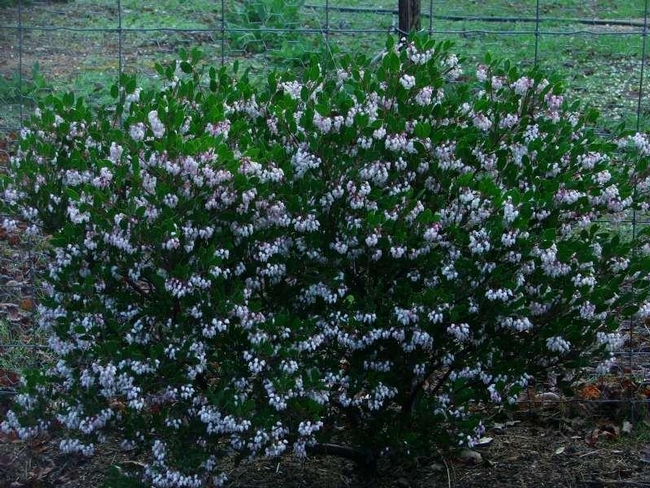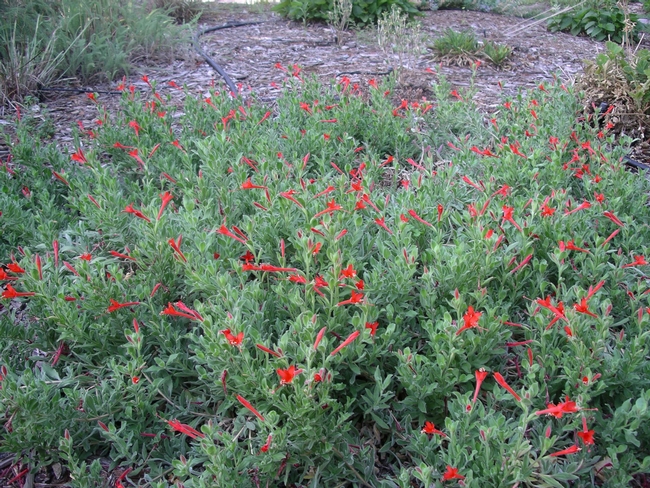By Cindy Weiner, Butte County Master Gardener, September 11, 2015.
While it's certainly possible to start native perennials, shrubs and trees from seed, most people buy plants that are growing in pots to transplant to the yard.
Howard McMinn Manzanita by C. Weiner
Most natives are adapted to well-drained soils with little nitrogen. In fact, some natives cannot tolerate nitrogen-rich soils. Generally, no amendments are necessary except to improve drainage. If your soil is very heavy, choose natives that are adapted to clay soils or dig in some ordinary topsoil to form mounded areas that will drain better. Organic amendments like compost may be necessary if you are planting in a new development where the topsoil has been removed by grading.
Unfortunately, native plants are just as susceptible as non-native ornamentals to damage from pocket gophers. If you have gophers in your yard, consider planting in wire baskets that protect the roots until your plant is established.
California Fuschia by C. Weiner
Mulching the planted area will help retain moisture and suppress weeds. Add 2 to 3 inches of mulch, keeping it 6 inches away from the base of the plant. If you are using organic mulch (such as bark), it will need to be renewed periodically as it breaks down.
Paying careful attention to the planting process will give your native plants a good start.

